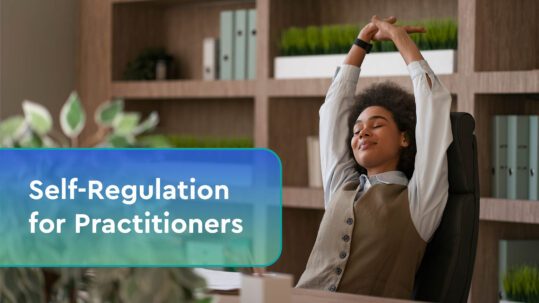How to Help Your Client Get Back to Work
Many people that experience a stroke, brain injury, or episode of psychosis have resulting cognitive complications. Many clients who have had a neurological accident or a psychotic episode can become unemployed and have trouble re-entering the workforce. Different kinds of clinicians can help their clients get back to work by providing cognitive remediation therapy and vocational support. In this blog post, we discuss how clinicians can help their clients get back to work by using cognitive remediation therapy
What is Cognitive Remediation Therapy?
Cognitive remediation therapy (CRT) is a therapeutic intervention that involves the building, practice, and transfer of cognitive skills to everyday life. A well-known form of CRT is NEAR – the neuropsychological educational approach to remediation.Developed by Dr. Alice Medalia for the purpose of cognitive remediation treatment for post-psychotic episodes for patients with schizophrenia. NEAR is adaptable and can be introduced to different clinical populations. NEAR involves a combination of digital cognitive therapy exercises and bridging questions. Digital exercises help clients build and practice and develop cognitive skills. Bridging questions allow them to think or experience the real-world transfer of these practiced cognitive skills. Clinicians often provide NEAR in group therapy sessions with structured activities and discussion throughout.
CRT Can Provide Additional Support
CRT services are not required to be conducted in group sessions. However, by hosting a couple of group sessions, each client in the group can practice their social cognition skills. Due to the isolation after a medical incident, many patients struggle to regain social skills. This method of therapy is not required but may help refine both the cognitive and social skills needed for the workplace, academic, and social environment.
Help Your Client Gain Real-World Experience
Helping your client find a volunteer experience will be a critical component to help them be reintroduced into the workforce. Try to aim for an opportunity that is related to an area of work they would like to enter or reenter. This type of experience gives the patient two critical opportunities:
- Provides your client the ability to practice the cognitive skills you are working on.
- Provides your client with adequate training and relevant experience to use when they are applying for jobs.
Many volunteer opportunities are available in different fields such as animal shelters, community centers, and hospitals. You should encourage your client to volunteer at the capacity that they feel comfortable with. Your client should not feel required to do it daily but instead work on an intensity that is beneficial for their rehabilitation. As they progress in therapy, your client may want to increase the amount of time they spend volunteering. This decision should be a group decision between you, the volunteer organizer, and your client. Sometimes, patients may want to increase their time in order to “rapidly” increase their healing. You should always remind your client that healing takes time and it will happen at its own speed.
Practice Problem-Solving Therapy and Skills
Helping your client learn to become an effective problem solver can help them become independent and solve problems that they will face. Some problems we all face in the workplace include meeting deadlines, managing time, completing tasks, and staying organized. These workplace challenges all rely on key cognitive functions such as executive functioning, attention, and working memory. Working on cognitive functions can help your client navigate the different personalities of colleagues and their demands in the workplace. Also, by working with your client on their problem-solving strategies, you can help your clients become more self-sufficient and self-directed volunteers and paid workers. To learn more about problem-solving therapy, check out this blog post.
Conclusion
Clinicians play a huge role in vocational rehabilitation. Providing cognitive remediation therapy can help your clients regain the skills they need to be able to volunteer. Volunteering allows them to practice the skills you’re working on and gain real-world experience. Introducing and including problem-solving therapy can help your clients gain the problem-solving skills they need to re-enter the workforce. The combination of problem-solving and cognitive rehabilitation therapy along with having your client engage in volunteering opportunities are key steps to success for your clients trying to reenter the workplace.
Real Life Extras
There are some exceptional vocational programs around the world that help people with cognitive impairment get back into the workforce. One exceptional example of a cognitive vocational rehabilitation program is WISE Employment WISE Ways to Work in Melbourne, Australia. This program is run by Anne Miles, an occupational therapist providing services to Australians battling mental illness. Check out Anne’s program here.









